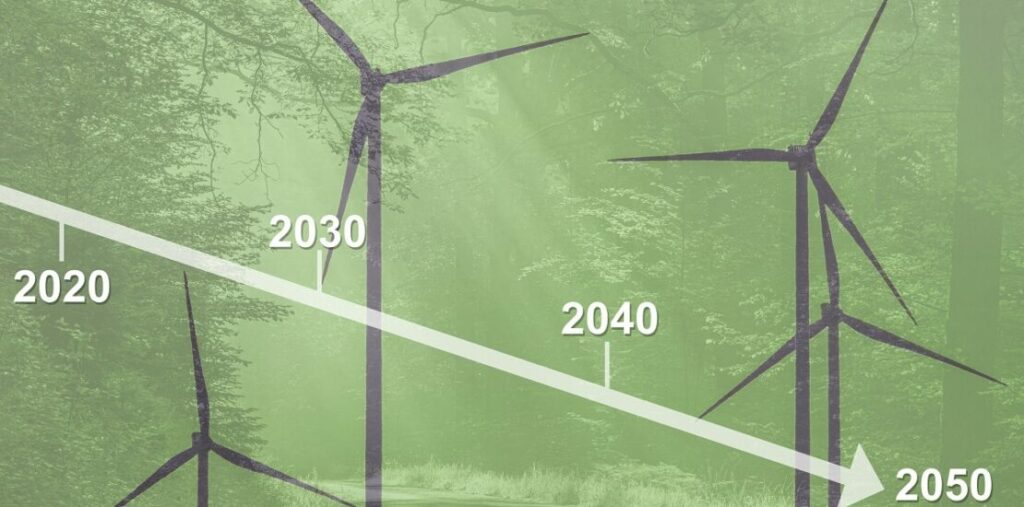The Race to Net Zero: Aligning the “How” and “Why”

The race to Net Zero by 2050 is on, and participating institutional investors are asking “how do we get there?” Many investors have the inclination to go directly to implementation and select one (or a combination) of the four main approaches that have emerged: investment, divestment, shareholder engagement, and carbon offsets.
Choosing the right approach is challenging given the lack of a standard definition for what a Net Zero portfolio looks like. Emerging Net Zero investment frameworks provide a set of principles to follow, but for the most part, investors are faced with the task of designing pathways and implementing approaches that align with their unique beliefs, ambitions, and operating constraints. This process – defining the “why” and aligning it with the “how” – is one of the most important aspects that investors must address when starting their Net Zero journeys.
Defining your “why”
Defining the “why” involves engaging key stakeholders to arrive at an organizational consensus regarding an institution’s ambitions and objectives. Multiple stakeholders will likely have different motives for pursuing a Net Zero strategy. As a result, stakeholder alignment around Net Zero should consider the following three, seemingly divergent but complementary ambitions: generating financial value, aligning with organizational beliefs, and making an impact on real-world decarbonization.
Financial value. Most institutional investors are driven primarily by long-term performance goals. In adopting a Net Zero strategy, it is important for an investor to develop a view regarding how Net Zero is likely to impact financial results. Adopting Net Zero may require significant changes to the investment process. Such changes are more likely to receive support from stakeholders and the investment staff if there is a belief that modifying the investment process will result in improved financial performance.
Aligning with institutional beliefs and values. ESG investing takes many forms, and one of those forms includes social responsibility, which aligns investments with values to shape and change societal norms. Investors should determine whether alignment with beliefs is important and whether the portfolio should, or could, be used to effectuate such changes. Fossil fuel divestment is one example, while conversely, selective investment in fossil fuel companies actively transitioning to a low carbon economy is another. Investing for climate justice, and the need to change existing power structures, presents another ESG option.
Real-world decarbonization. Finally, most Net Zero frameworks stress the importance of asset owners effectuating real-world decarbonization. By simply allocating away from high emitting companies, and investing in low emitting companies, investors can reduce the corresponding carbon footprint but this only results in ownership changes and does not reduce atmospheric emissions. Investors looking to have a real-world impact will likely choose to utilize their shareholder voices to effectuate the decarbonization of (potentially high emitting) companies they own.
Aligning the “how” with the “why”
Once investors define their beliefs, ambitions, and constraints, they are in a position to articulate their emissions targets and the approaches to implement.
Setting a portfolio emissions target can be done internally or by external service providers. Since there is no single generally accepted standard for measuring or estimating a corporation’s carbon footprint, developing a baseline for a portfolio will require compiling data from multiple sources across asset classes, and making assumptions for investments where reporting is weaker, such as private equity.
After establishing a baseline, the asset owners can establish emissions targets. Most investors are incorporating science-based targets (including the emissions pathways) that align with a 1.5°C temperature rise. The process of setting targets and selecting the approaches to implement (outlined below) should be coordinated.
Investment in climate solutions. Common to all Net Zero frameworks is the view that asset owners should make direct investments in companies that facilitate decarbonization and the transition to clean energy. This activity can include investments in publicly traded solar and wind generating companies to investments in start-up enterprises focused on regenerative agriculture. It can also mean investing in front-line communities, those most disproportionately impacted by climate change, to address climate justice concerns. The greater the belief and conviction that investment activities can both align with values and generate returns, the more inclined asset owners should be to set specific allocation targets.
Exclusion lists and divestment. Divesting from fossil fuel companies arguably has little impact on real-world decarbonization as this simply transfers ownership from one holder to another. That said, fossil fuel companies should be treated separately in the context of implementing Net Zero approaches because these companies produce products that are the main source of global warming. As such, divestment as a movement can serve to limit product demand and raise awareness of the role that fossil fuels have played, and continue to play, in changing the climate. Divestment is typically executed through the use of exclusion lists like The Carbon Underground 200TM.
Note: In evaluating fossil fuel investments, many institutional investors are taking a more nuanced approach to divestment as they study and often modify their approach to allow for selective, criteria-based investment in fossil fuel companies that have demonstrated a commitment to transition their businesses in alignment with the low-carbon economy.
Shareholder engagement. If investors are primarily focused on accelerating real world decarbonization, the most effective way to do this is by utilizing shareholder influence through proxy voting or supporting/initiating resolutions that support better climate disclosure or actions. Most of these activities will need to be executed through external managers and will ultimately impact an asset owner’s interactions with managers, including changes to the manager selection and monitoring process.
Offsets. The carbon offset market has emerged to be a controversial yet important component in helping companies supplement the decarbonization of their operations. Offsets are projects that remove carbon from the atmosphere. Companies generally measure their carbon footprint and then purchase offsets to “eliminate” the remaining carbon footprint that cannot be reasonably reduced from its operations.
Offsets in the voluntary market are not investments, but function more like donations where the proceeds enable decarbonization activities that would not otherwise be funded. While offsets have been utilized primarily by corporations, an increasing number of asset owners and asset managers are purchasing offsets to reach Net Zero goals more efficiently. For example, an asset owner may have developed an alpha generating process it doesn’t wish to change. By buying offsets, the asset owner can manage its carbon footprint similar to a portfolio overlay strategy (with no impact on performance), and thereby eliminate the disruption of a proven investment process or manager line-up.
Like offsets, carbon hedges (e.g., short positions on high emitting companies) can also be used at the portfolio level to manage the financial risks stemming from the portfolio carbon footprint and to bring a portfolio in line with a specific goal or target. In contrast with to offsets, hedges do not directly effectuate real-world decarbonization but will “offset” the financial risk posed by carbon.1
Conclusion
Climate change and the race to Net Zero present great risks, but also great opportunities for investors to make an impact and fulfill their performance goals. The approaches to implement are there, choosing the right combination will require aligning the “how” with the “why.”
